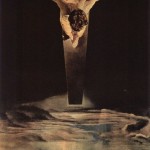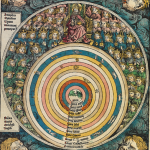I’m a fan of the Irish sitcom “Father Ted,” an extremely irreverent (and yet sometimes touching) sitcom about three incredibly unholy Irish Catholic priests.
One episode turns on the fact that a local relic is going to be “upgraded from a class 3 relic to a class 2 relic” which sounds like the kind of hyper-Catholic thing you might imagine. When I watched it I thought the screenwriters made up the idea of numbered classes of relic, but then I later found out that there are, in fact, classes of relics in the Catholic Church. But you can’t upgrade a class 3 to a class 2.
Here are the three classes of relics:
There are three classes of sacred relics. The first-class is a part of the saint’s body. (It is this type which is placed in an altar stone.) The second-class is a piece of the saint’s clothing or something used by the saint, while the third-class is an object which has been touched to a first-class relic.
I find that to be wonderful. Why?
What is the story of the Church, the story of our salvation?
The Church is a great machine for re-divinizing the world. Genesis describes the creation of the Universe in terms of the building of a temple. At the center of that temple is Adam, the first great high priest, whose role is to liturgically divinize the world. Because Adam failed, the world and human nature became broken.
The new Adam, Jesus, the perfect high priest, by offering the perfect liturgy and perfect sacrifice to the Father on the Cross, opened the door to the divinization of the world. The divinization of the world, the New Creation that Paul talks about, began literally in the flesh of the Risen Christ. And now the Church, which is the Body of Christ, is this great enterprise, this great mystical army, whose job is to redivinize the world. Bit by bit, atom by atom. All of the great mighty acts of God though His Church–the schools, the hospitals, the universities, the art, the service to the poor–are sacramental acts because they are acts of divinization of this world by God’s grace, and supremely so with the Eucharist, which literally divinizes bread and wine. It is hard not to walk through parts of the Italian countryside or the great monasteries and not think that these are places that have been in concrete ways divinized, divinized by the greatest civilizing force in the history of the world, the Catholic Church.
In the Book of Acts, we find that the Church healed the sick by using bits of cloth touched to Paul’s body. The Bible teaches us that God works through human beings and through his Good Creation. God’s work of divinization transforms our bodies and our flesh, and continues even in the dead bodies of saints, which have been divinized. But here’s what’s more: this divinization is contagious. If you touch a piece of clothing, or a rosary, or anything else to a class 1 or class 2 relic, it is now a relic. It is no longer an ordinary item, it is an outpost of the New Jerusalem. In an imperceptible but nonetheless real and concrete ways, these ordinary items are now vehicles of God’s grace, of the God who works through the ordinary, the concrete, the overlooked, to perform mighty acts. It is a small part of the Church’s great work of divinization of the world.
O the depth of the riches and wisdom and knowledge of God!















